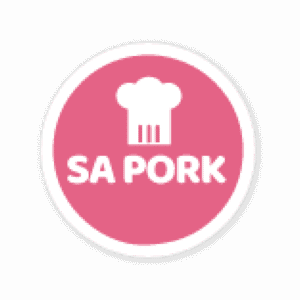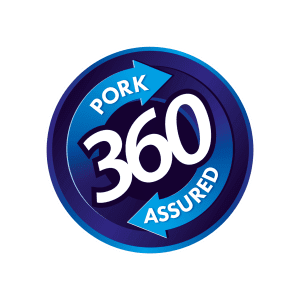Hedging diesel while focusing much more strongly on equipment running costs offer farmers the most effective mechanisms to manage the impact of increasing fuel prices on production costs.
South African farmers are currently facing the convergence of increased global oil demand, higher oil prices, a weak rand-dollar exchange rate, increasing taxes, an inefficiently applied fuel rebate and significant fertilizer inflation. Given this, “perfect storm of costs, it will be inevitable for farmers to absorb the latest fuel price increases weighing down on already thin margins.,” says Marthinus Loock, AgriBusiness Senior Manager at Standard Bank.
Improved economic growth, especially in the developed West led by the United States (US), has seen a steady increase in the price of brent crude since the beginning of 2019.
While in recent years ZAR gains against the US dollar have counteracted the effects of increased oil prices, “this year sustained growth in the US has seen the ZAR perform relatively poorly against the US dollar,” says Loock. As such, on a pure pricing level, South African farmers are currently facing the convergence of a depreciating ZAR coupled with an increasing brent crude price.
In view of the R5.49 per liter tax on diesel, “we now also have a situation where 35 – 40% of the price of diesel in South Africa is made up of taxes,” says Loock. Despite this tax burden making diesel in South Africa significantly more costly than in neighboring countries, “the percentage of administered costs in the fuel price is expected to increase further,” cautions Loock.
This year’s budget, for example, introduced a 10 cent per liter carbon tax. Since this is relatively low by global standards, South Africa’s carbon tax rates are likely to grow over time, “especially considering the pressure under which South Africa’s fiscus is currently operating,” he adds.
Some relief is provided to the Agricultural sector in terms of a diesel rebate. About 100% of the portion of levies on the diesel price supporting South Africa’s Road Accident fund (R1.98 /l) and only 40% of the fuel levy (R3.37/l) qualify for South Africa’s agricultural fuel rebate, “says Loock.
Furthermore, only the diesel used directly in the production of food qualifies for the rebate. Farmers are, for example, required to keep log books recording which diesel purchases were used for tractors to plow or used to fill harvesters. “Fuel used for bakkies or transport of goods to markets or broader distribution to consumers does not qualify for the rebate,” says Loock.
Finally, South Africa’s agricultural fuel rebate is, anyway, limited to primary agriculture. Since food distribution and the broader fuel needs of agriculture’s wider supplier and distribution ecosystem do not qualify for the fuel rebate, “the rebate is likely to have a limited palliative effect on food inflation when measured across the entire agricultural value chain,” says Loock.
Even more broadly, however, “the largest driver of production cost inflation is not even fuel but rather fertilizer, a by-product of the oil refining process” says Loock. In fact, last year’s diesel price increases only accounted for a 0.8% increase in total intermediary agricultural production costs in 2018.
Fertilizer prices, however, accounted for a 5.7 % increase in total intermediary agricultural production costs. Amongst the components of fertilizer, urea in particular, experienced a 15% price increase over 2018.
The disproportionate impact of fertilizer inflation on agricultural production, especially grains, becomes evident, “when one considers that fuel costs account for 6% of income produced, while fertilizer costs account for up to 21% of income produced,” explains Loock. Since the greatest factors driving grain production inflation are not, in fact, fuel, but rather fertilizer costs, says Loock.
Given the perfect storm currently raging amongst the traditional drivers of South Africa’s fuel price, the limited ability of the country’s very narrowly applied fuel rebate to manage these costs, “what can farmers do to manage today’s increased production costs and heightened price risk?” asks Loock.
Firstly, diesel hedge and option contracts traded on SAFEX provide farmers a mechanism to purchase forward contracts on diesel at fixed prices in ZAR. This allows farmers to purchase three months’ diesel supply at a fixed price ahead of planting or harvesting, for example. This can help farmers manage the impact of price spikes on production costs.
The broader agricultural value chain, including beneficiators, transporters and distributors, can also, hedge diesel. As such, “hedging diesel provides a mechanism to bring fuel price stability and cost-predictability to the entire agricultural value chain. This has the potential to significantly reduce the carry-through effect of increased fuel prices on food inflation,” explains Loock.
Secondly, farmers can use new technologies and up-to-date equipment to reduce running costs. Farmers generally replace their mechanised equipment, especially tractors) every five years or so.
New equipment, and especially the technologies to manage and monitor the equipment that new models increasingly come with, “provide farmers an opportunity to increase the efficiency of equipment while also reducing running costs,” says Loock.
Instead of merely looking at capital costs when purchasing new equipment, “farmers should work closely with tractor manufacturers to develop comprehensive mechanisation plans that can increase performance and production while reducing fuel consumption and other running costs,” says Loock.
So, while there is not a lot that farmers can do about global oil consumption and production trends, the international price of brent crude, taxation or legislation, “hedging diesel and reducing running costs through the judicious purchase of equipment and its strategic use are two tools available to the industry in these challenging times,” says Loock.
If applied broadly across the entire agricultural value chain in South Africa, “the sector could successfully reduce the impact of increased fuel prices on food inflation in the broader economy,” concludes Loock.
The South African Pork Producers’ Organisation (SAPPO) coordinates industry interventions and collaboratively manages risks in the value chain to enable the sustainability and profitability of pork producers in South Africa.








